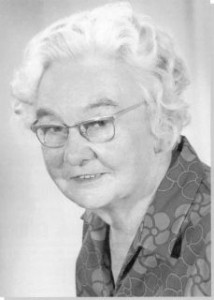The Schroth Method Scoliosis Treatment
The New York Times published an article (May 14, 2014) about the Schroth Method of scoliosis treatment that has the internet buzzing. This exercised-based treatment method, popular in Europe, has many people asking: What is the Schroth Method?

The Schroth Method, is one of a group of non-invasive treatments for idiopathic scoliosis. It has been implemented Europe since the 1920s. The method was developed in Germany by Katharina Schroth, a physical therapist who herself had scoliosis. The method is now used in clinics specifically devoted to Schroth therapy for scoliosis patients in Germany, Spain, England, and, most recently, the United States. The Schroth Method is a physiotherapeutic treatment system which employs isometric and other Schroth Method exercises to strengthen and lengthen asymmetrical muscles in a scoliosis patient. The goal of the Schroth Method, like all non bracing, non invasive methods of scoliosis care, is to slow curve progression, reduce pain, increase lung function, improve posture and appearance, maintain improved posture, and avoid surgery.
The Schroth method was further developed by Katharina Schroth’s daughter Christa Lehnert-Schroth. By the 1960s, the Schroth Method became the standard non-surgical treatment for scoliosis in Germany.

The premise behind the Schroth Method is that all scoliosis cases involve asymmetrical muscles. That a scoliotic spine twists abnormally due to strength imbalances among muscle groups in the back and lower extremities that are supposed to be balanced. The belief is that some muscles on one side of the back grow stronger than the opposite side and pull harder on that side of the spine. The weaker muscles cannot compete causing the asymmetry to worsen over time. Their system does not focus on why the scoliosis exists so much as where the “imbalance” is and how to treat it.
Since each individual scoliosis is unique, and exercises that benefit one patient may hinder another, an individualized Schroth Method exercise regime is developed to restore “balance” based on the specific muscle groups in a particular patient that are too “weak” and “overdeveloped”. This consists of muscle-strengthening and stretching exercises that aim to “derotate and elongate the spine back into its normal position”. The patient is required to perform these scoliosis exercises for about half an hour each day. Patient compliance is an important factor for the outcome, as they are expected to keep up with the exercises.

The same principles of the Schroth Method are applied for the treatment of mild and moderate scoliosis cases in children, adolescents, adults, and those with severe scoliosis. The goal of Schroth Method is for patients to be able to sit and stand straight by the practice of moving their body out of its “unbalanced state, past the longitudinal axis towards the opposite side”.
Schroth rotational-angular breathing technique is used in conjunction with these exercises. This is a breathing technique believed to help from the inside to push the ribs outward. The patient pushes the misaligned rib cage outward from the inside by targeted breathing against the direction in which the curved spine tends to move. As isometric tension of the back muscles is practiced in a correction of the scoliosis, the patient is inhaling. The patient maintains this position while exhaling. The idea is to “overcompensate in the opposite direction of the spine curvature” to bring it back into alignment.
Lehnert-Schroth C : Three-dimensional treatment for scoliosis. The Martindale Press Palo Alto, California; 2007. ISBN 978-0-914959-02-1
Editor’s Note:
I will add a few comments to this post in an effort to distinguish Schroth procedures (which today have many variants from the original Katharina Schroth applications) from those offered at the Hudson Valley Scoliosis Correction Center. It has been well-documented that patients with scoliosis demonstrate a significant increase in neuroanatomical abnormalities of the corticospinal tract, as well as neurophysiological abnormalities, especially in the areas of vestibular function, proprioception, vibratory sensation, postural reflex mechanisms, abnormal reflex processing, and disordered postural equilibrium. At this office we address these underlying issues by combining a sophisticated customized home based exercise program made up of both isometric and isotonic scoliosis exercises, specific chiropractic manipulations to mobilize directly the restricted areas of the spine, specific spinal cord stretching techniques, balance training, along with neuro-muscular re-education maneuvers to train the body to hold the corrections achieved. This website contains many articles that expand on these ideas.